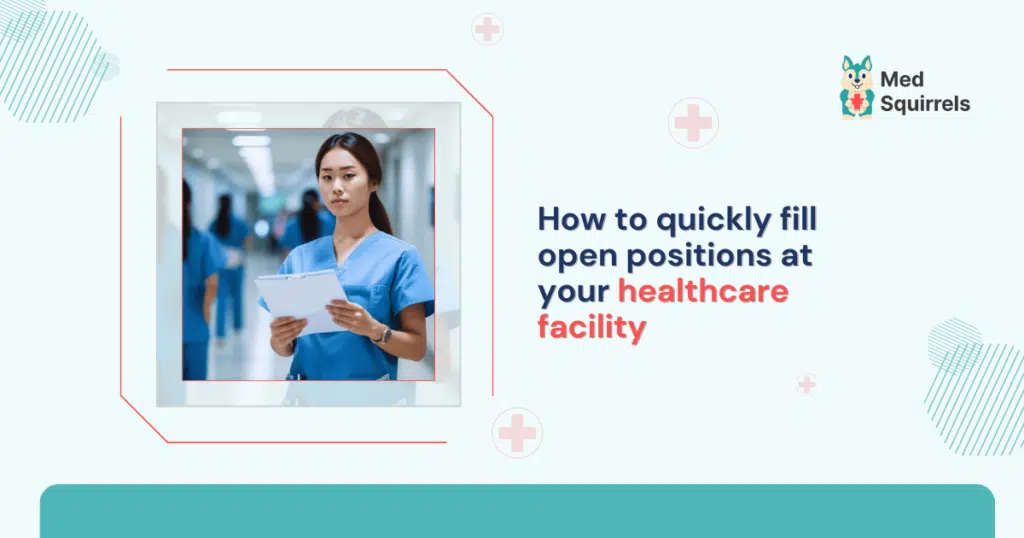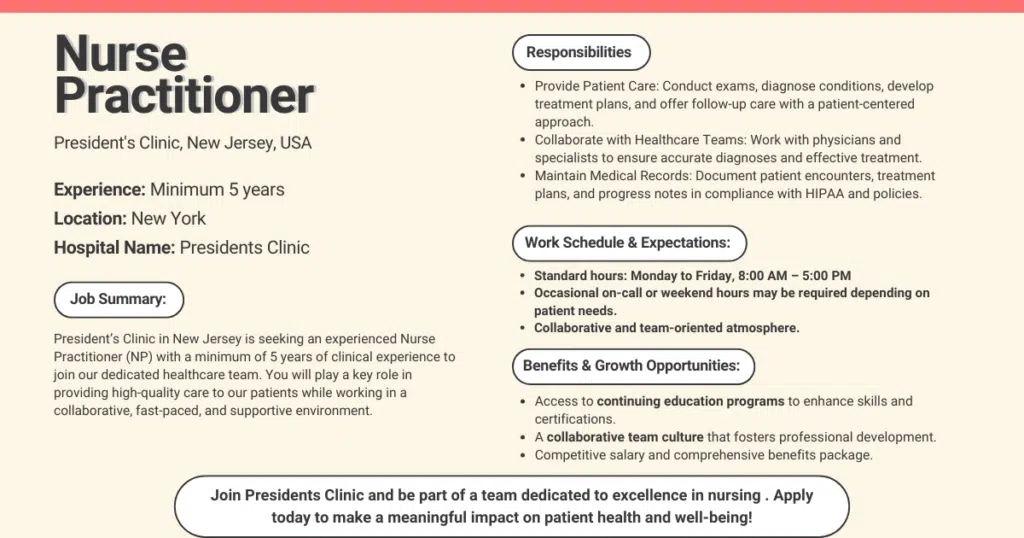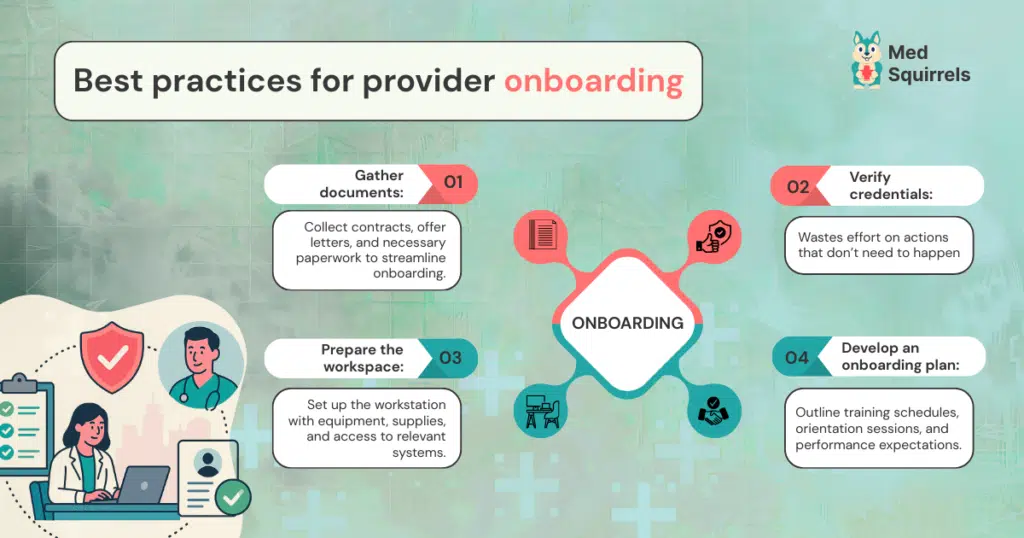How to quickly fill open positions at your healthcare facility

Open roles in healthcare are not just HR metrics—they are direct risks to patient safety, provider burnout, and regulatory compliance. Whether you are managing a small clinic or a large hospital system, every unfilled role increases pressure across the board. If you are considering how to quickly fill open positions in your healthcare facility, this blog offers tested strategies that leading organizations use to stay fully staffed and operational.
From streamlining your healthcare hiring process to leveraging AI in healthcare hiring, these approaches are tailored to help you hire healthcare professionals fast, without sacrificing quality or compliance. This blog also highlights real-world examples and modern healthcare staffing solutions that deliver results. By the end, you will be equipped with actionable steps to improve your healthcare recruitment strategies and reduce costly hiring delays.
Diagnose hiring delays and focus on crucial care roles
Before launching another job post, pause and assess your internal healthcare hiring process. Delays often originate from outdated systems, inconsistent approval chains, or vague job descriptions. These bottlenecks can cause your team to lose qualified talent to faster-moving employers.
Start by segmenting your staffing needs. Which open roles impact patient care most directly? Prioritize patient-facing roles, like nurses, technicians, and clinicians, where understaffing could compromise safety or compliance. Non-clinical roles can sometimes be backfilled with per diem or part-time talent.
A streamlined healthcare facility staffing strategy balances urgency with regulation. For example, credentialing lead times can vary by role and state. Planning around those timelines ensures compliance while minimizing gaps in coverage. Consider when full-time staff are essential for continuity of care, and where contract-based professionals can offer flexibility during peak demand or staff shortages. A flexible staffing model that combines both can improve coverage, reduce costs, and support long-term retention.
Additionally, consider conducting a quarterly audit of hiring KPIs to identify trends and anticipate future staffing needs. Integrating workforce analytics can further help in forecasting demand and avoiding reactive hiring cycles.
Also read: The role of flexible staffing models in modern healthcare
Write job descriptions that attract qualified healthcare talent
High-quality job descriptions can dramatically improve both visibility and response rate. Each listing should include the job title, hourly or salaried pay, shift expectations, and the exact location. In competitive markets, job seekers often skip over vague or generic listings.
Ensure your job ads align with how candidates actually search. Most use clear, descriptive terms, like “Nurse Practitioner” instead of abbreviations like “NP.” Using language that matches search intent improves visibility on job boards and across healthcare recruitment services.
Where possible, mention flexible work models such as hybrid, contract, travel-based, or per diem options. These enhance your job’s attractiveness and are increasingly part of modern healthcare staffing solutions.
For better understanding, a sample detailed job description is included below to illustrate the structure and keywords that resonate most with today’s healthcare professionals.

Expand your reach: source talent across states and specialties
When local candidates are scarce or overcommitted, you will need to widen your search. One of the most effective ways to hire healthcare professionals fast is to consider nurse practitioners, contract providers, or clinicians with multi-state licensure.
Adding relocation assistance or housing stipends makes a role more attractive to out-of-area professionals. While this may sound expensive, the cost of an unfilled role, lost billing, increased overtime, and patient dissatisfaction can be far higher.
Be mindful of legal provisions such as state-specific licensing laws, credentialing timelines, and labor compliance when onboarding out-of-state providers. Cultural fit is equally important; professionals should align with your facility’s values, communication style, and care standards. In today’s highly competitive healthcare market, the speed at which you move can determine whether top-tier candidates accept your offer or go elsewhere.
Another strategy is to build a flexible internal bench. Cross-train existing staff and maintain a list of per diem or seasonal workers. This proactive approach is part of long-term healthcare recruitment strategies and can be vital in covering urgent shifts.
Also read: Importance and challenges of hiring nurse practitioners
Speed up hiring with AI-powered healthcare staffing platforms
One major hurdle in the healthcare hiring process is speed. Traditional staffing agencies often require lengthy onboarding and manual verification, which can delay placements by weeks.
Modern, AI-enabled healthcare staffing solutions solve this problem. These platforms use intelligent matching to quickly align qualified candidates with your specific roles, saving you both time and effort. Automated credential verification, shift scheduling, and compliance tracking are often built in.
Take MedSquirrels, for example. The platform leverages AI in healthcare hiring to match professionals faster and reduce the time it takes to fill roles. It also optimizes pay transparency and helps you hire healthcare professionals with minimal friction.
Optimize onboarding to get new hires on the floor sooner
Even after you have selected a candidate, delays in onboarding can push start dates back by weeks. That is why optimizing onboarding is just as important as optimizing recruitment.
Partner with modern staffing platforms that use digital onboarding tools to streamline everything from background checks to compliance documentation. Pre-assign EMR access and preload orientation content to shorten ramp-up times. Assigning a point-of-contact, such as a staffing coordinator, can help the new hire navigate your system more efficiently.
This approach is central to modern healthcare facility staffing models, allowing for quicker integration, improved staff retention, and enhanced patient outcomes. A well-structured onboarding process is vital, and healthcare facilities must adopt these practices consistently for better operational and clinical outcomes. A detailed infographic is included below to simplify and visualize the entire process.

The Smarter way to quickly fill open positions at your healthcare facility
If you are still wondering how to quickly fill open positions at your healthcare facility, you are not alone. Many healthcare leaders start by posting to generic job boards or tapping into traditional staffing agencies. And while those approaches can sometimes deliver results, they often come with significant trade-offs.
Job boards may flood your inbox with unqualified candidates, making it harder and slower to find the right fit. Traditional staffing agencies, though helpful at times, often require lengthy contracts, lack transparent processes, and rely heavily on manual coordination, leading to longer onboarding times, unclear communication, and higher operational costs.
That is where MedSquirrels, a healthcare staffing platform, makes a difference. This is a modern healthcare staffing platform built specifically to solve these long-standing challenges. By combining AI-driven candidate matching, automated credentialing, and compliance tracking, all in one streamlined system, MedSquirrels empowers facilities to hire healthcare professionals faster, with less admin overhead and greater reliability.
You get not just technology, but also affordable hiring plans. Whether you are a small clinic, a mid-sized practice, or a large hospital group, MedSquirrels offers flexible plans to suit your staffing needs:
- The Blue Plan — dedicated to healthcare recruitment services only, ideal when you need to source candidates while managing onboarding independently
- The Purple Plan — used when you have already hired the clinician and just want payrolling, HR, and compliance support
- The Orange Plan — a full-service option combining talent sourcing, credentialing, onboarding, payroll, benefits, and compliance
Each plan aligns with different facility needs, from lean clinics to high-volume health care systems, while preserving cost predictability and efficiency. And best of all, MedSquirrels, you only pay after the provider is confirmed and onboarded.
When your goal is to hire healthcare professionals quickly, without sacrificing quality or compliance, MedSquirrels delivers streamlined outcomes. The platform handles everything from credentialing to timekeeping to payroll at a fraction of the time and cost typical of traditional agencies.
Ready to experience a faster path to filling roles? Book a free demo and see how MedSquirrels can transform your staffing strategy.
FAQs
How do I make my job postings more attractive to candidates?
Be transparent and detailed, clearly list the job title, pay range, work schedule, and location. Highlight additional perks such as flexible shifts, remote work options, sign-on bonuses, or housing stipends to make the role more appealing.
What is the most efficient way to source qualified healthcare professionals?
Leveraging AI-enabled staffing platforms and recruiting travel nurses or clinicians with multi-state licenses allows for quicker access to a broader talent pool. These staffing platforms and networks often outperform traditional staffing agencies in speed and reach.
What hiring strategies work well for rural healthcare facilities?
When hiring, consider offering relocation support, travel roles, or housing incentives to attract top talent who might otherwise overlook less urban locations.
What hiring strategies work well for rural healthcare facilities?
Providing relocation assistance, travel roles, or on-site housing can make rural positions more competitive and attractive. These incentives help overcome geographic barriers and appeal to professionals seeking flexibility or lower living costs.
Can MedSquirrels help us hire for hard-to-fill roles or remote locations?
Yes. MedSquirrels has access to a national pool of travel nurses, per diem clinicians, and multi-state licensed professionals, making even the toughest locations easier to staff.
